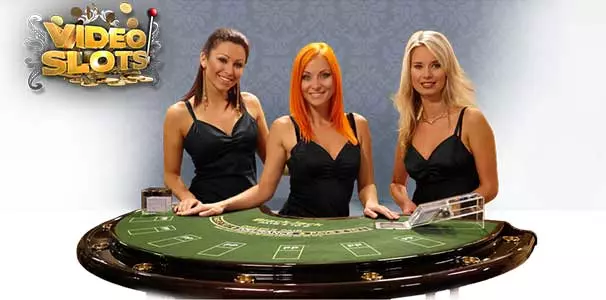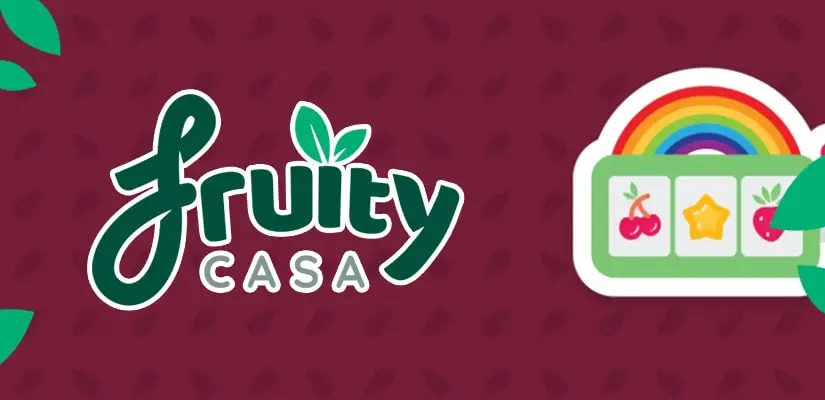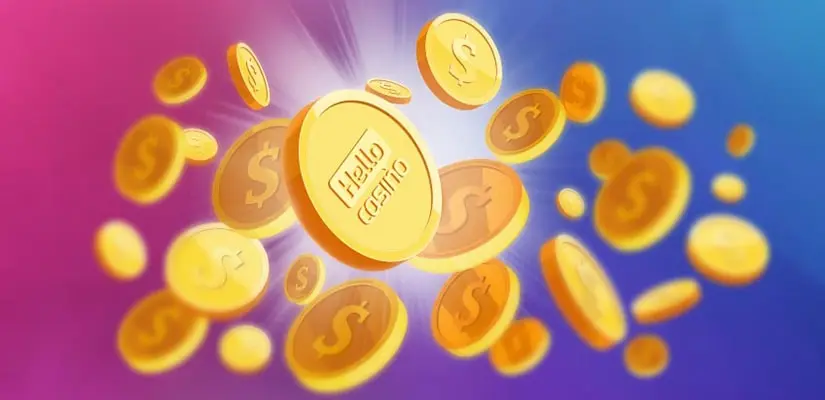When picking an online casino, most players base their choice on criteria such as licensing, game diversity, bonuses, and loyalty rewards. Most tend to neglect the return to player percentage, which is easily one of the most crucial things to factor in when deciding where to take your real-money action.
Commonly abbreviated as RTP, said percentage is an integral component of all casino games and ultimately determines how much of the wagered money players win back in the long term. All properly licensed casinos must display information about their games’ return percentages, allowing players to draw comparisons and make better-informed choices when deciding where to bet.
In a highly competitive market, the best regulated gambling sites provide players with high overall return percentages. In turn, this means the odds are less tilted to favor the casino and you grind against a lower house edge.
In the following article, SuperCasinoSites explains in detail what RTP is, how online casino games are tested for fairness, and by whom. We finish off with a shortlist of the highest-value online casinos in terms of RTP to spare you the scutwork of finding them on your own.
RTP and House Edge – Two Sides of the Same Coin
The return to player (RTP) reflects the proportion of money wagered that players receive back by way of monetary prizes. One way to calculate the RTP is by dividing the overall amount won by players in the long term by the total amount they have wagered on a given casino game.
In games without strategy where no element of skill is involved, players can arrive at the RTP percentage by subtracting the house edge from 100%. Common examples of such games include roulette, craps, and slots, where it is impossible for players to affect the odds in any way and tilt them in their favor.
One important thing to note is the greater the number of trials, i.e. rounds you go through, the more accurate information you gain about a casino’s game actual return percentage and the more precise the above equation becomes. By precise we mean the two components of the equation come nearer and nearer to number 1 as the number of trials grows bigger and bigger.
Thus, the theoretical return of casino games is equal to 100% – House Edge % whereas the actual return is (100% – House Edge %) / Return to Player > 1. People tend to use the terms RTP and theoretical return interchangeably but there is some difference between the two. The number of rounds required to reach the advertised return percentage depends on whether a game is compensated or completely random. Now, let’s examine the difference between the two.
Compensated vs. Random Game Control
Games that involve some kind of feedback compensation built into their software are known as “compensated” games. By contrast, games that implement and operate on completely random software are known as “fully random” ones. With that distinction in mind, you should also take note of two things.
1Pseudo-Random Number Generators (PRNG)
The word “random” typically refers to pseudo-randomness in the context of gaming machines and online casinos. Most online casino games rely on pseudo-random number generators (PRNG) to yield their outcomes. PRNGs use initial seed numbers and complex mathematical algorithms to produce results that appear random but are, in fact, deterministic in nature.
2True Random Number Generators (TRNG)
While the results are still impossible to predict with certainty, the number sequence inevitably starts to repeat itself at a given point. In contrast, true random number generators (TRNG) rely on truly unpredictable physical phenomena to create random numbers/outcomes rather than on mathematical calculations. Common examples include atmospheric noise and radioactive decay.
3PRNG vs TRNG
Both compensated and completely random games produce their results with the help of RNGs. However, the number of rounds required to reach the advertised return percentage differs between the two types. Compensated games usually reach their targeted return after tens or hundreds of thousands of rounds, while their completely random brethren require millions of cycles to arrive at their expected RTP percentages.
RTP in Compensated Games
In compensated games, the software continuously examines results that have occurred in the recent past to see how much money it has so far awarded to players. Knowing both the current and target return percentages, it would marginally vary the odds of scoring a win or the size of a win’s value for the rounds to follow.
Such variations enable the compensated game to yield payouts more or less frequently, and produce higher or smaller prizes than it otherwise would. It all depends on whether or not the current return is higher or lower than the game’s targeted percentage. Such “compensation” exists for two reasons:
- Compensation results in less volatility for players, spreading the winning and losing rounds more evenly over time. It also ensures a more even profit flow for the house, which many gambling operators prefer.
- From a purely technical perspective, modeling the gameplay of more complex gambling machines and games is difficult for game designers. Such games might end up struggling to achieve their return percentages, especially if players implement strategies. Feedback compensation is usually the only viable course of action to make such games reach their targeted RTPs.
RTP in Completely Random Games
Unlike their compensated cousins, completely random games rely solely on the statistical chance of random outcomes offering a payout. Since they use statistical probability, such games require a significant number of trials, usually millions, for the results to average out and arrive at their targeted RTPs.
It is for this very reason the RTP is normally quoted as an average percentage. It manifests itself after a huge number of rounds – you cannot expect to make $1 bets on a slot with a 90% RTP, win back $900, and lose $100 over the course of a thousand trials only.
How Different Casino Games Rank in Terms of RTP
Let’s have a quick look at some examples to demonstrate how the RTP works in different casino games. For the sake of simplicity, we shall start with the wheel-based game of roulette where outcomes are fully based on chance and completely independent from each other.
1Roulette
A single-zero roulette game carries a house edge of 2.70%, which is to say the theoretical return to player equals 100% – 2.70% = 97.30%. After a sufficient number of trials, the probabilities even out so that players lose approximately 0.027 cents per every dollar wagered. Add an extra zero for 38 numbered pockets on the wheel, and the player return drops to 94.74%, with a twice as high house edge of 5.26%.
2Craps
Similarly to roulette, craps is a chance-based game of independent trials. One major difference between the two is that here house edges and player return percentages vary across the board, depending on the type of bets one makes. A person who plays the pass line without odds faces a house edge of 1.41% and will win back approximately 98.59% of their total wagers over time. The contrast is enormous when you compare pass line wagers with Big Red (Any 7) bets, which carry a house edge of 16.70% and only return 83.30% of total wagers in the long turn.
3Video Poker
Return percentages in video poker depend on payouts which is why comparing the games’ paytables at your preferred casinos is of utmost importance for your long-term profitability. Let’s assume casino A offers a 9/6 paytable for Jacks or Better video poker – this is to say flushes pay at odds of 6 to 1, whereas a full house yields a 9 to 1 payout.
In one such “full-pay” variation, the overall return to player is rather high at 99.54%. In the meantime, casino B offers 8/5 Jacks or Better where the payout reduction for a flush and a full house causes the RTP to drop 97.30%. A sensible Jacks or Better player would choose to enjoy their favorite game in Casino A rather than Casino B any day.
4Slots
As far as slots go, return percentages vary wildly across the board, and usually range anywhere between 80% and 99%. House edges and return to player are influenced by a variety of factors, including paytables, combinations, and in-game features. The good news is most properly regulated casinos publish the percentages of their entire slot catalogs so that players can check and compare the games’ RTP. Another way to figure out the player return of your chosen slot is by opening the help section where such information is normally available.
The above-listed games (bar video poker) rely on pure chance and require no strategy. Most also have a high hit frequency, especially even-odds bets in roulette and pass line wagers in craps. One key thing to note here is that the lower the win frequency of a given game is, the more rounds are required for it to arrive at its target return percentage.
Theoretical vs. Actual Return to Player
As previously mentioned, there is a distinction between theoretical and actual player return. Assume a player bets straight up on single-zero roulette, wagering $1 on each round. In one such scenario, they expect a return of around 97.30%. If said person wagers a dollar on 32 red one million times for cumulative wagers of $1 million, they would have won back roughly $970,300 of their money in theory.
However, winning straight up with any single number in roulette is not such a frequent occurrence. It will happen approximately once in every 37 trials over the long haul, which is why we can reasonably expect the actual return of one such player to differ significantly from the theoretical RTP.
Now, assuming the same person chooses to instead spend $1 million on even-money wagers, one bet at a time. If so, they will experience a nearly equal number of wins and losses so their real return will swiftly converge to the theoretically expected 97.30%. This is because even-money bets stand better chances of winning and wins will occur much more frequently (18 in every 37 times). Thus, the actual return will catch up to the theoretical return more quickly.
RTP of Online Casino Games Played with Strategy
Some casino games like video poker and blackjack enable players to influence their return by implementing a correct strategy. Since some players inevitably make strategy mistakes, the return percentages typically are not equal to 100% – [casino advantage], i.e. they slightly differ from the theoretically expected values.
It is possible for games to exceed their expected return percentage within a given month, and vice versa, they might underperform and produce a lower return than what is theoretically expected.
Because of these discrepancies, many licensed online casinos release RTP reports each month to show players how the games perform. They achieve this by logging the bets and results of all players throughout the month. You can find the long-term theoretical return of common casino games in the table below.
| Long-Term Theoretical Return of Common Casino Games | |
|---|---|
| American Roulette | 94.74% |
| European Roulette | 97.30% |
| French Roulette (with La Partage in place) | 98.65% |
| 9/6 Jacks or Better Video Poker | 99.54% |
| Pass Line Craps Bets | 1.41% |
| Baccarat (with a commission on winning Banker bets and 8 to 1 payouts on ties) | 98.94% |
| Casino War | 97.20% |
| 2 Hand Casino Hold’em Poker | 99.18% (based on total bets) |
| Atlantic City Blackjack | 99.65% |
| Video Slots | Ranges from under 90% all the way up to 99% |
Key Independent Test Houses of Online Casino RTP
All reputable regulatory bodies (including the likes of the MGA and the UKGC) require their licensees to subject their gaming catalogs to regular audits. The practice aims to ensure all games converge to their expected theoretical return percentages. It also serves to instill confidence in the fairness of the games and show they indeed produce unbiased results.
It is typical for regulators like the UKGC (UK Gambling Commission) to demand such audits to be carried out by approved test houses. The testing agencies are always independent to prevent conflict of interest and ensure objectivity. They evaluate the output of the Random Number Generators implemented by the casinos within a specific period, let’s say a month.
One such test involves millions of rounds. In online roulette, for example, it serves to show the RNG consistently produces random results, with each number within the range of 0 to 36 having equal chances of hitting.
Below are some of the key test houses that audit online gambling games. If your chosen casino bears the stamp of approval of one of those agencies, you can rest assured you are playing fair games.
eCOGRA
The UK-based eCOGRA was founded in 2003 and has established itself as a leading third-party test house. The internationally acclaimed agency specializes in certifying online casinos and online gambling software. It has accreditation in several gambling jurisdictions, including the UK, New Jersey, Italy, Denmark, Sweden, Malta, Alderney, the Isle of Man, and Gibraltar.
Gaming Laboratories International (GLI)
Gaming Laboratories International (GLI) is another leader in the field of online gaming certification and testing. The company has over 30 years of experience in the industry and is held in high regard by regulators in over 480 jurisdictions.
NMi (Nederlands Meet Instituut)
NMi (Nederlands Meet Instituut) started its history as a private audit company in the late 1980s and originally tested roulette wheels. The agency has greatly expanded since then and presently has offices on both Dutch and British soil. Its test reports and certificates hold weight in multiple jurisdictions worldwide.
Gaming Associates (GA)
Gaming Associates (GA) has been providing testing and certification services for the gaming industry since the early 1990s. It works with software developers, gambling operators, and regulators in more than 20 jurisdictions. It has conducted over a thousand audits so far and boasts a client satisfaction of over 99%.
Highest Value Online Casinos Based on RTP
In a highly saturated market, gaming sites strive to beat the competition by offering higher return to player percentages than those of their rivals. This translates into lower house edges, better winning chances, and greater profits for players over the long haul. The only trouble is that finding those offering the highest value requires hours, if not days of research.
We have done the heavy lifting for you, presenting you with a shortlist of online casinos with high RTP percentages. All of them undergo regular audits by the above-mentioned test houses and publish the results on their websites, allowing players to compare RTPs and pick the games with the most value. Topping it all off, our recommendations provide excellent game selections, fast payouts, and top-notch promotions.
 Skol Casino
Skol Casino Videoslots
Videoslots Casino Action
Casino Action UK Casino Club
UK Casino Club Fruity Casa
Fruity Casa Hello Casino
Hello CasinoSkol Casino
Skol Casino presents players with an exhilarating selection of premium casino games, including hundreds of great slots and many table mainstays. The website hosts regular weekly promotions and offers special bonuses during holiday events like Christmas, Easter, and Halloween. Skol Casino customers can benefit from round-the-clock support service available in multiple languages.
All games on its catalog undergo rigorous tests and their monthly player return percentages are readily available for players to check on the website. Customer security is one of the biggest priorities of Skol Casino. The operator offers various player-protection tools so that you can enjoy your favorite casino releases safely and responsibly.
Skol players can make free deposits and withdrawals via a range of reliable banking solutions, including Neteller, Skrill, Visa, PayPal, and Trustly. All sensitive banking information is kept safe as the casino implements state-of-the-art encryptions and firewalls.
Videoslots
Created by a team of Swedish gambling experts, Videoslots is home to an impressive collection that spans over 5,000 releases from more than a hundred software studios. Here you will find some of the hottest creations of major suppliers like Microgaming, Yggdrasil, Play’n GO, Quickfire, and NetEnt.
The gambling brand is well-respected in the industry and rightfully so. It carries licenses from the reputable UKGC and MGA as well as from the local regulators of Sweden, Italy, and Denmark. Always at the helm of innovation, the operator caters to players with the My RTP service which provides them with overall stats on the games they play.
The feature additionally enables them to view stats on their individual betting session as well as to monitor their own return percentages. Players can also see the games’ hit frequency and the largest wins each release has produced. The only downside of the feature is that it is currently available only on the casino’s desktop version.
Casino Action
Part of the popular Casino Rewards network, Casino Action is the leader of the pack when it comes to Microgaming-powered gaming sites. Here you will find hundreds of exhilarating slots by the renowned Isle of Man-based studio, along with dozens of authentic table classics and video poker variations. The website features some of Microgaming’s most lucrative progressive releases, including Mega Moolah and Cash Splash.
Brought to players by Apollo Entertainment Limited, the casino operates with licenses from the Malta Gaming Authority (MGA) and the UK Gambling Commission (UKGC). It provides 24/7 customer support, allowing players to immediately speak with a friendly representative whenever they need help.
Additionally, players have access to detailed wagering and gaming histories via the PlayCheck feature. All games are subject to rigorous tests on behalf of the reputable eCOGRA audit agency, which has established Casino Action has an overall return to player percentage of 96.48%.
UK Casino Club
As the name suggests, UK Casino Club is geared predominantly towards the needs of British players. In operation since 2000, the website features a well-rounded collection that spans more than 550 state-of-the-art releases by Microgaming. The UK Casino Club covers all bases when it comes to regulation as it carries the stamp of approval of the UKGC and the MGA.
The casino has made a name for itself thanks to its robust desktop product offering, although it also boasts full mobile compatibility. Navigating through the portfolio is easy as it can be both on desktop computers and smartphones, largely thanks to the slick and user-friendly design.
The website gets extra points for its intuitive cashier, which allows customers to conduct payments via highly secure solutions like Paysafecard, Skrill, Neteller, and AstroPay. All payout percentages are available in the website’s Fair Play section. The eCOGRA audit has established all releases in the portfolio are fair and unbiased.
Fruity Casa
Fruity Casa leads the pack with an extensive library that comprises games from over 110 big and small software studios. Here you can enjoy blazing-hot slots created by Quickspin, Pragmatic Play, Playson, NetEnt, Merkur, Leander, IGT, and Big Time Gaming. The live section operates on the Evolution Gaming platform, bringing life-like casino entertainment straight to your desktop and mobile screens.
Slots may be Fruity Casa’s specialty but this is not to say the website lacks options for fans of table games. On the contrary, here you will find a versatile selection of blackjack, roulette, baccarat, and house-banked poker variants. Progressive slots like Mega Moolah and Mega Fortune are also on the menu, giving you the opportunity to join the multi-millionaire club.
The gaming operation holds licenses from no fewer than two regulatory bodies, the MGA and the UKGC. This ensures there can be no dishonest behavior on behalf of Fruity Casa. The casino is confident enough in its solid offering to publish the RTPs of all of its games – you will find the full list of releases and their corresponding percentages in the website’s footer.
Hello Casino
Hello Casino is home to more than 500 top-notch games, including slots, roulette, blackjack, and bingo. These are courtesy of some of the best game suppliers on the market like IGT, NetEnt, Play’n GO, Quickspin, Red Tiger, WMS, and Thunderkick. Evolution Gaming and Pragmatic Play supply the live dealer games.
The user-friendliness of Hello Casino is remarkable. Everything is easy to find as the lobby features dedicated tabs for the popular titles, the new releases, jackpots, video and classic slots and table games. You can even filter the gaming options based on features like Megaways, must-drop jackpots, and drops & wins.
Hello Casino offers an extensive range of deposit and withdrawal options, including various country-specific solutions. The friendly support team is at customers’ disposal at all hours, 7 days a week, 365 days per year. All in all, Hello Casino is a cut above the rest in all aspects of its operation.